From Key to Keyless: How Smart Door Lock Works?
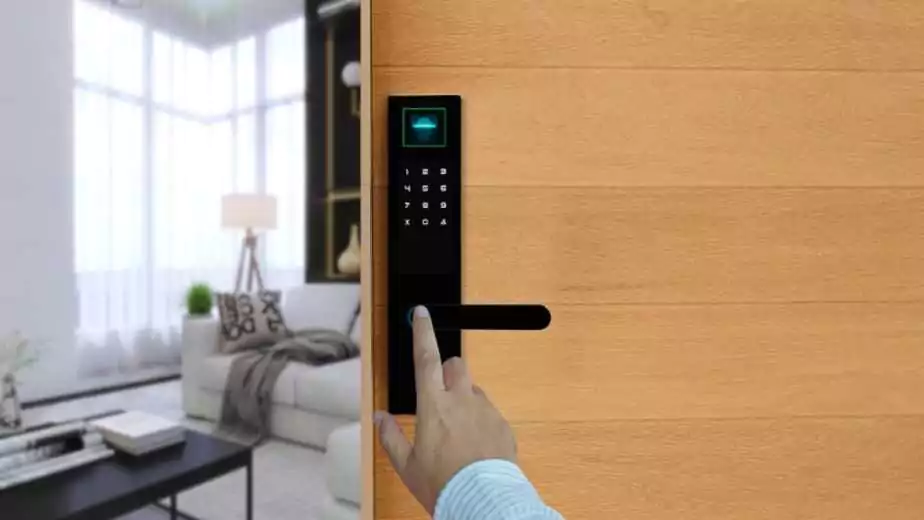
The concept of home security has evolved significantly over the centuries, from basic mechanical locks to sophisticated electronic systems. In recent years, the advent of smart technology has revolutionized how we protect our homes, giving rise to smart door locks as a pivotal component of modern home security. These innovative devices have transformed traditional lock-and-key systems, offering a blend of convenience, control, and enhanced security that was once the stuff of science fiction.
This blog aims to delve into how smart door lock works, unravelling how they contribute to the safety of your home. We will explore their security benefits, highlight the importance of proximity door locking, and demonstrate why smart door locks have become indispensable in the era of smart homes. By integrating seamlessly with our daily lives, smart door locks offer peace of mind and represent a significant step forward in our ongoing quest to create safer, more intelligent living spaces.
1 What Are Smart Door Locks?
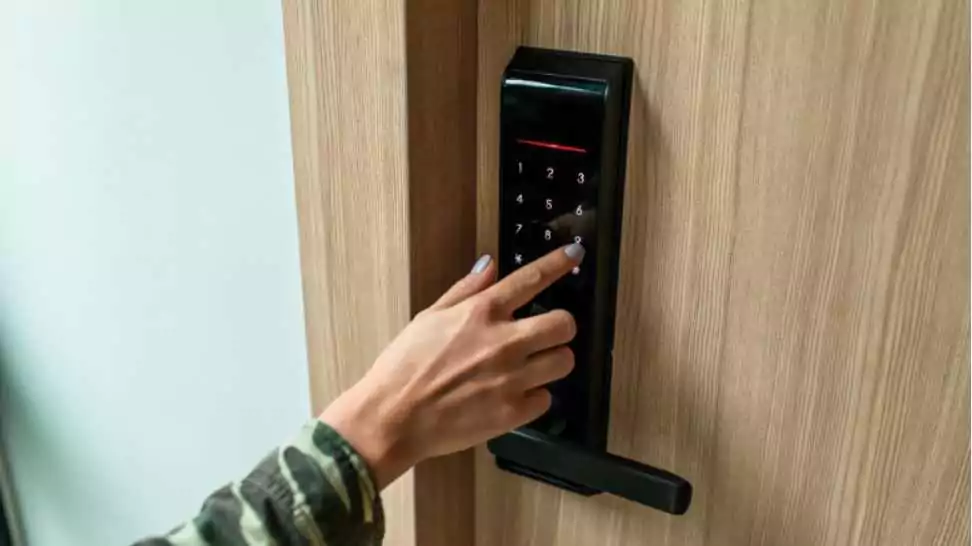
In the realm of home security, smart door locks represent a significant technological leap, blending the physical security of traditional locks with the sophistication of digital technology. But what exactly are smart door locks, and how do they function to secure our homes more effectively?
A smart door lock is an electromechanical device that locks and unlocks a door when it receives instructions from an authorized device using a wireless protocol and a cryptographic key to execute the authorization process. Unlike traditional locks, smart door locks offer more than just a physical barrier to entry; they integrate into a home’s smart ecosystem, providing both security and convenience through advanced technology.
Overview of the Technology Behind Smart Door Locks
Smart door locks operate using a variety of wireless technologies, including Wi-Fi, Bluetooth, and Z-Wave, each serving a unique role in how the lock communicates with other devices:
- Wi-Fi: Offers the broadest range, allowing for remote access to the lock from virtually anywhere, as long as you have an internet connection.
- Bluetooth: Facilitates local control, connecting the lock to your smartphone when you’re in close proximity.
- Z-Wave: Requires a Z-Wave hub to communicate with the lock, enabling integration with a wider smart home system and control through a central hub.
How Smart Door Locks Operate: A Step-by-Step Guide
- Installation and Setup: Replace your traditional lock with the smart lock and connect it to your home’s wireless network.
- Device Pairing: Pair your smart lock with your smartphone or any authorized device through the lock’s dedicated app.
- Access Configuration: Set up access permissions, and authentication methods, and manage other settings via the app.
- Operation: To unlock or lock the door, send a command through your authorized device, which the lock will execute after verifying the cryptographic key.
Authentication Methods
Smart door locks offer various authentication methods to verify the identity of the user:
- PIN Codes: Enter a unique code on the lock’s keypad.
- Biometrics: Use fingerprint recognition or facial recognition for entry.
- Smartphone Apps: Unlock the door through an app, often using Bluetooth or Wi-Fi.
The Role of Encryption in Secure Communication
To safeguard against unauthorised access, smart door locks employ advanced encryption techniques. This encryption ensures that the communication between the lock and the authentication devices remains secure, preventing potential hackers from intercepting and deciphering the data. By using cryptographic keys that are nearly impossible to duplicate, smart door locks offer a high level of security that is essential in the modern digital age.
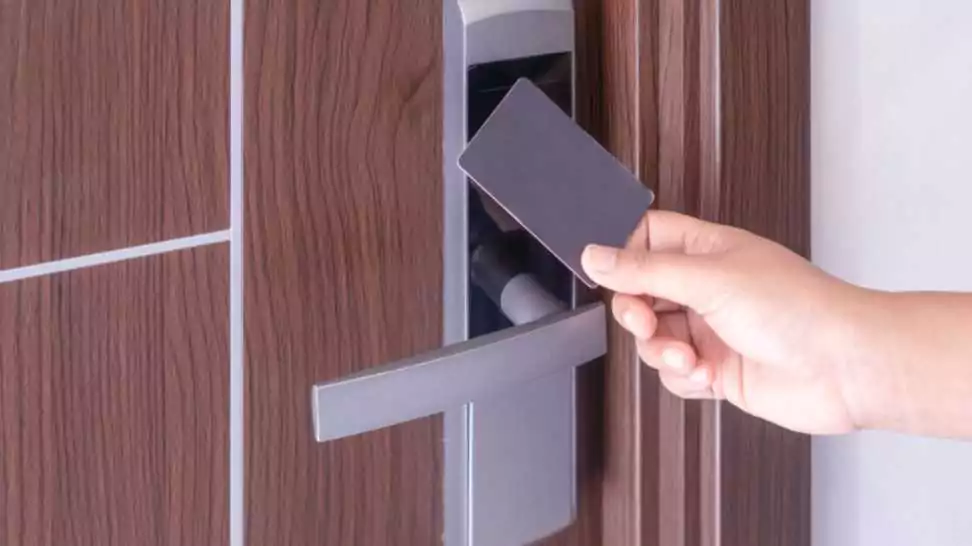
2 How Smart Door Locks Work?
To appreciate the full value of smart door locks in enhancing home security, it’s essential to understand the mechanics behind their operation. These devices are more than just digital versions of traditional locks; they are complex systems that integrate various components and technologies to provide seamless security and connectivity.
Mechanics of Smart Door Locks
The mechanics of a smart door lock revolve around its ability to receive, authenticate, and act upon commands from an authorized device. This process involves several key components working in harmony:
- Motor: Acts as the physical mechanism that moves the lock’s bolt to lock or unlock the door. It is triggered by commands received from the electronic control unit.
- Electronic Control Unit (ECU): The brain of the smart door lock, the ECU interprets commands received from connected devices and controls the motor accordingly. It processes the authentication method used and decides whether to lock or unlock the door.
- Communication Module: Facilitates wireless communication between the smart door lock and other devices using technologies such as Wi-Fi, Bluetooth, or Z-Wave. This module is crucial for receiving commands and sending status updates to the user’s smartphone or central smart home system.
- Power Supply: Smart door locks are typically powered by batteries, ensuring they remain operational even during a power outage. Some models may also include features like low battery alerts or emergency power options.
Interaction with Smart Home Ecosystems
Smart door locks are designed to be integral components of broader smart home ecosystems, offering interoperability with other smart devices. This interconnectedness enhances both convenience and security in several ways:
- Remote Access and Monitoring: Through integration with home Wi-Fi networks and smart home hubs, smart door locks can be controlled and monitored remotely via smartphones. This allows homeowners to lock or unlock their doors from anywhere, receive alerts when the door is accessed, and even grant temporary access to visitors.
- Automation and Scenarios: Smart door locks can participate in custom automation within a smart home ecosystem. For example, locking the door can trigger the security system to arm, lights to turn off, and the thermostat to adjust to an energy-saving setting.
- Voice Control: Compatibility with voice assistants like Amazon Alexa, Google Assistant, and Apple Siri enables users to control their smart door locks using voice commands, further enhancing the user experience and accessibility.
3 How To Secure A Smart Door Lock?
While smart door locks inherently offer a higher level of security compared to traditional locks, their reliance on digital technology means they also inherit certain cybersecurity risks. Fortunately, there are several measures homeowners can take to fortify the security of their smart door locks, ensuring their digital convenience does not become a vulnerability.
Enhancing Security with Smart Door Locks
Regular Software Updates and Patches:
Manufacturers frequently release software updates and patches to address vulnerabilities and enhance the functionality of smart door locks. Regularly updating your smart lock’s firmware ensures you benefit from the latest security improvements and bug fixes, making it harder for attackers to exploit outdated software.
Strong Password Practices and Two-Factor Authentication:
Implement strong password practices for your smart lock app and any associated accounts. This includes using unique, complex passwords and changing them periodically. Additionally, enable two-factor authentication (2FA) if your smart lock system supports it. 2FA adds an extra layer of security by requiring a second form of verification (such as a code sent to your phone) before allowing access to the lock’s settings or remote control features.
The Importance of Using Secure Wi-Fi Networks:
Since many smart door locks rely on Wi-Fi to communicate with your smart home ecosystem and the internet, it’s crucial to ensure your home Wi-Fi network is secure. Use strong Wi-Fi encryption (WPA2 or WPA3), change the default router login credentials, and regularly update your router’s firmware. Consider setting up a separate network for your smart home devices to further isolate and protect them from potential intrusions.
Features that Boost Security:
Look for smart door locks with additional security features that enhance their protective capabilities:
- Auto-Locking: Automatically locks the door after it has been left unlocked for a predefined period, ensuring your door is never accidentally left unlocked.
- Access Logs: Keeps a record of every lock and unlock event, including times and the identities of those who accessed the door, allowing for comprehensive monitoring of door activity.
- Tamper Alerts: Sends immediate notifications if someone attempts to tamper with the lock or force the door open, enabling rapid response to potential security threats.
4 Why Proximity Door Locking Is Needed in Smart Homes?
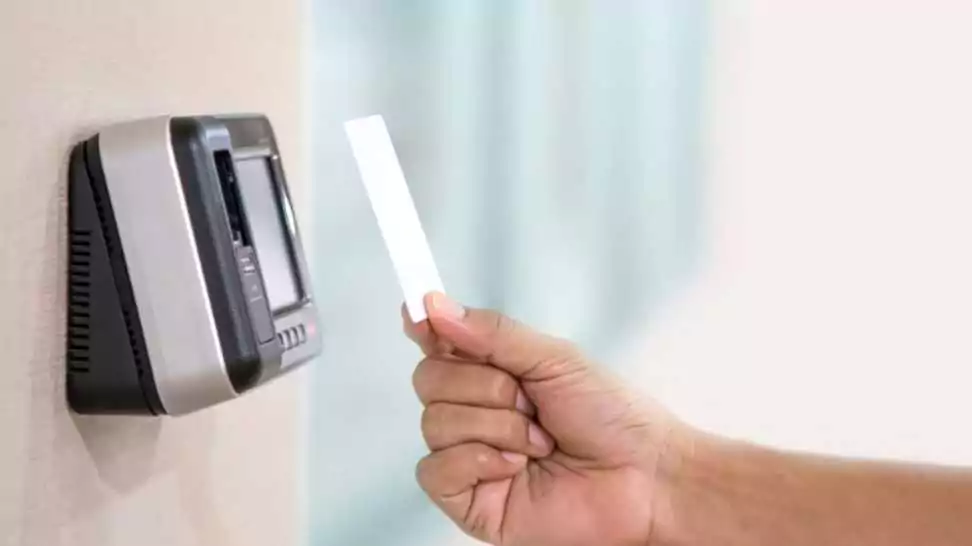
Proximity door locking is a feature that takes the convenience and security of smart homes to the next level. By leveraging the user’s location through their smartphone or other wearable devices, smart door locks can automatically lock or unlock doors, offering an unprecedented blend of security and convenience. Let’s delve into the significance of proximity door locking and its role in the modern smart home ecosystem.
The Significance of Proximity Door Locking
Proximity door locking significantly enhances modern home security and convenience without compromising safety. It allows doors to unlock automatically as you approach, eliminating the hassle of keys or smartphones, and locks the door as you leave, ensuring security even if you forget to lock it manually.
Using geofencing technology, proximity door locking creates a virtual boundary around your home, automatically locking or unlocking the door as you come and go. This is especially useful for families with children or when your hands are full.
Moreover, it integrates with home automation for increased safety during emergencies, such as fires or security breaches, by automatically unlocking or locking doors.
In essence, proximity door locking uses smart technology to make homes safer and more responsive, seamlessly blending security with everyday convenience. It’s a crucial component of smart homes, offering protection while enhancing the quality of life.
5 Why Smart Door Locks Should Be Used?
The transition from traditional locks to smart door locks is more than just an upgrade; it’s a transformative shift in how we interact with and secure our homes. The advantages of adopting smart door locks are numerous, encompassing enhanced security, unmatched convenience, and sophisticated control over who can access your home. This section will highlight these key benefits and share insights from case studies or testimonials to underscore the practical advantages of smart door locks.
Key Benefits of Smart Door Locks
- Enhanced Security: Smart door locks offer superior security features compared to traditional locks, including encrypted communication, tamper alerts, and the ability to remotely monitor and control access to your home. This advanced security infrastructure makes it significantly harder for unauthorized individuals to gain entry.
- Convenience: The convenience offered by smart door locks is unparalleled. Features like keyless entry, remote locking and unlocking, and automatic locking when you leave the vicinity of your home make daily life more seamless. Gone are the days of locking yourself out or hiding spare keys under the doormat.
- Remote Access: With smart door locks, you can control access to your home from anywhere in the world. Whether you need to let in a guest while you’re away or check to make sure you lock the door, remote access provides peace of mind and flexibility.
- User Access Control: Smart door locks allow you to assign special access privileges to friends, family, or service workers. This means you can grant access for limited times or specific days, enhancing both security and convenience.
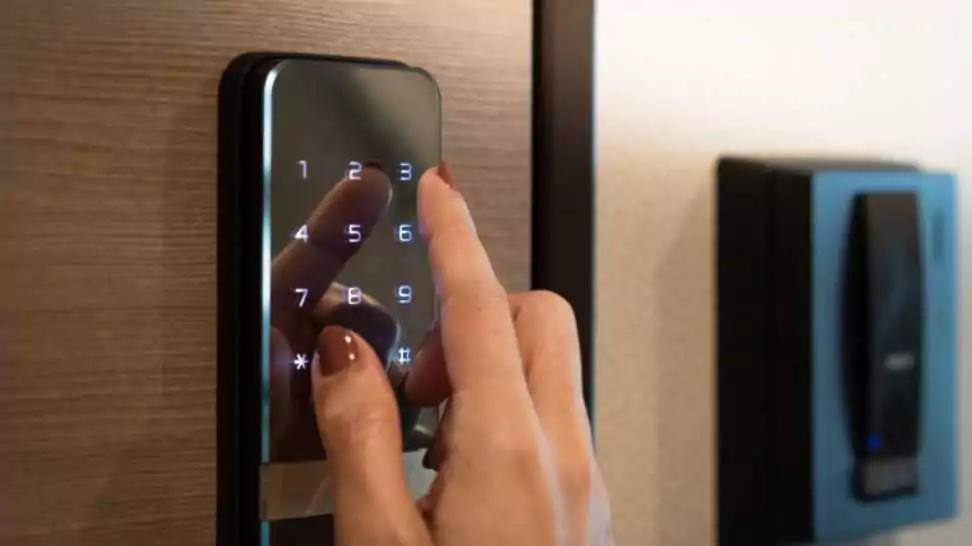
6 Smart Door Lock Security Tips
Adopting smart door locks is a step forward in securing your home with technology’s help. However, maintaining the security of these devices is crucial to ensure they serve their purpose effectively without becoming a liability. Here are some best practices and recommendations for selecting and maintaining the security of your smart door lock, ensuring it remains a reliable guardian of your home.
Best Practices for Maintaining Security
- Keep Firmware Updated: Regularly check for and install firmware updates provided by the manufacturer. These updates often contain security patches and enhancements that protect against the latest threats.
- Use Strong, Unique Passwords: For any app or device that controls your smart lock, use strong, unique passwords. Avoid reusing passwords across different services to minimize the risk if one service is compromised.
- Enable Two-Factor Authentication (2FA): If your smart lock’s system supports it, enable 2FA. This adds a layer of security, making it more difficult for unauthorized users to gain access.
- Monitor Access Logs: Regularly review the access logs of your smart door lock. Unexpected or unknown entries could indicate unauthorised access, allowing you to take immediate action.
- Secure Your Wi-Fi Network: Since smart locks often connect to your home Wi-Fi network, ensure your network is secure. Use strong encryption (WPA2 or WPA3), a robust password, and consider a separate network for your smart home devices.
Recommendations for Choosing a Smart Door Lock
- Look for Recognized Security Standards: Opt for smart locks that meet recognized security standards, such as those from the American National Standards Institute (ANSI). Locks rated Grade 1 by ANSI offer the highest level of residential security.
- Research Brand Reputation: Choose a smart lock from a reputable brand known for its security and reliability. Reading reviews and testimonials can provide insight into the experiences of other users.
- Consider Compatibility with Your Smart Home Ecosystem: Ensure the smart lock is compatible with your existing smart home devices and platforms. This integration can enhance security and convenience.
- Evaluate the Lock’s Features: Look for features that match your security needs, such as biometric access, tamper alerts, and auto-locking capabilities. More features may offer better customization but also require thorough understanding and management.
- Assess the Backup Options: Consider how the smart lock is powered and what backup options exist in case of power failure or a network outage. Options like physical keys or emergency charging ports can provide peace of mind.
7 Wrapping Up
This blog has shown how important smart door locks are for making modern smart homes safer and more convenient. These locks are much better than old ones because they work well with our everyday life, letting us control our doors from anywhere and keep an eye on who comes and goes.
Using smart technology at home is more than just handy; it’s a smart way to make our homes safer and smarter. Smart door locks are leading the way in this change, protecting us from both break-ins and online threats. As we keep adding these smart devices to our homes, we need to stay careful about keeping everything secure.
Community Q&A
About This Article
This article has been viewed 132 times.



